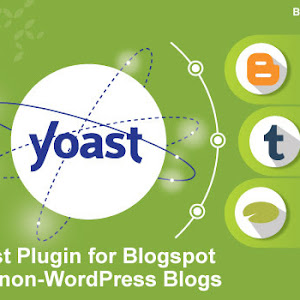
Like Wikipedia says, a brand is a name, term, design, symbol, or other feature that distinguishes an organization or product from its rivals. Within this blog post, we'll see what is brand, branding, and how to create a brand identity for your blog.
Brand
When we talk about a brand, a couple of things come to mind, like logo design, it's business activities, tagline, products, and etc. to name a few. A brand is basically a unique identity that helps your readers or customers recognize your business among your competitors. In simple words, it is an emotional connection between you as a business and your customers.
Branding
When we dig down further in this context, a term branding comes into the picture. The process which involves creating a strong and positive identity of your brand in the mind of the customer is called branding.
Branding involves creating your logo, defining mission statement, laying out rules and regulations to keep consistency in your marketing communications, fonts, and color themes.
Brand Identity
Going even further, brand identity becomes a result of all the efforts taken by the company to promote the brand to the customer as a single entity
Why branding for your blog is necessary?

To take blogging ambition to the commercial level, the branding of the blog is very much necessary. Branding helps to create an impactful image for your blog. Within this post, we will have a look at all the factors that help to build a strong brand identity for a blog.
In a brand development process, we transform a couple of blog elements. We set certain rules and guidelines for marketing communications. We make sure that every communication that is taking place follows these rules and our blog is as per these standards.
Let's have a closer look at the elements which ascertain an impressive look of the blog and builds a professional brand image.
Branding
When we dig down further in this context, a term branding comes into the picture. The process which involves creating a strong and positive identity of your brand in the mind of the customer is called branding.
Branding involves creating your logo, defining mission statement, laying out rules and regulations to keep consistency in your marketing communications, fonts, and color themes.
Brand Identity
Going even further, brand identity becomes a result of all the efforts taken by the company to promote the brand to the customer as a single entity
Why branding for your blog is necessary?

- Impression: The right branding efforts makes the first impression impactful in the mind of visitors. It is always good to have a positive impression among your readers when they visit your blog.
- Seriousness: It makes you look serious in the line of business. We all bloggers always work in collaboration with each other as well as with our readers. We can not let our blog look casual anytime.
- Unique Identity: Branding makes your identity unique. It makes your readers aware of your presence. It establishes a connection between the blog and the blog readers. Your readers will start to recognize your blog as often they visit and spread the word about your presence through the influential channels.
- Helps you Grow: Branding helps your blog grow by building authority. Branding builds a positive image. Hence, building trust and personal attachment with readers. Ultimately, helping your blog grow.
- Helps you sell: Branding helps in building authority as discussed above. A high authority blog makes selling products or services easy. Hence generating better revenue.
To take blogging ambition to the commercial level, the branding of the blog is very much necessary. Branding helps to create an impactful image for your blog. Within this post, we will have a look at all the factors that help to build a strong brand identity for a blog.
In a brand development process, we transform a couple of blog elements. We set certain rules and guidelines for marketing communications. We make sure that every communication that is taking place follows these rules and our blog is as per these standards.
Let's have a closer look at the elements which ascertain an impressive look of the blog and builds a professional brand image.
1. The blog name
The first and foremost factor that comes to our list while creating the brand identity is the blog name. Finding a unique blog name is a complex task. Since there is a huge competition and you may not get the desired name so easily.
Though we will ensure adhering to below points while deciding the blog name:
- A blog name should be unique and original.
- It should be easy to remember.
- It shouldn't be taken by anyone else before.
- It should be descriptive enough to get understood by everyone.
- Should have a connection with your niche.
All these points need to be taken into consideration while deciding the blog name. Also, you need to be careful, as once chosen the blog name, it is going to stick around with the blog for forever.
2. Choosing the blog address
A blog address or a domain name plays a vital role in building your blog identity. It should be unique and not confuse your readers with your competitors. Here is the list of other factors that need to be considered while registering a domain name:
- It should be short and easy to remember.
- A blog address should be easy to type. Should avoid confusing spellings.
- Include your keywords in your blog address
- Try to get a .com extension or an extension that best suits your niche.
Registering the desired blog address is really a difficult task. All creative blog names are already taken. Hence do quick research before designing a blog logo and registering the address.
3. Designing the blog logo
The next step is to design a creative logo that can be used in marketing communications and for the blog as a face image. Look at it as a face photo with which all people will associate. Now, the logo can be designed in three ways. Those are:
i. Logo with typography: This type of logo contains pure typographic work that represents your brand name. Google, Cadbury, CocaCola are few examples who follow this type of logo style.

ii. Logo with a symbol: Some brands use a symbol to represent their brand. A single icon or a graphical object is used as a logo that gives a clear picture of the brand. Apple, Mercedes, Twitter, Playboy are some brands that use this type of logos and easily recognizable.
iii. A logo with mixed elements: You will find many brands with this type of logo. So in this category, we use both, i.e. text and symbol to design the logo. A new blog should have this type of logo. Once you have enough exposure you can go for the logotype that we discussed in the second category. Blogging Hacks has this style of logo. Some popular brands that follow this type of logo style are BMW, AT&T, Puma, so on, and so forth.
(Note*: We do not have any kind of affiliation, connection with the brands listed in this post. These are purely to list out the logo categories and information purposes).
Best practices for logo designing:
- Keep originality in the logo.
- Make sure it has a connection with the blog and the audience.
- It should tell the brand story.
- The logo should look good in the brand colors, black and pure white color, small and large size.
4. Write a catchy tagline
A blog tagline is the key piece of the information that helps your readers understand what is your blog about. It could also define the long-term goal of your blog.
Some of the popular taglines used by famous brands are:
McDonald's – I'm Lovin' It
Imperial Blue – Men will be men
KFC – Finger-Lickin' Good
Kit Kat – Have a break, have a kit kat
A tagline could be very helpful to a new visitor visiting the blog for the first time and has no idea about the content on your blog. It helps readers understand the blog niche and the objective of the blog. A tagline gives you an opportunity to build an image before a user starts reading the blog.
A catchy tagline helps to build brand identity in the mind of the readers. Hence, consider below tips while writing a tagline:
- It should contain a positive message.
- It should be written in the active voice rather than passive voice.
- Use strong words to make it impressive.
- Keep it concise.
5. Choosing the color palette
There is a lot to talk about the color theory and simply can not be covered within this point. Colors have a connection with psychology. Colors can convey emotions, feelings. For eg., the red represents anger, love, or glory, blue represents peace, black represents silence.
You may read the blog post on Understanding Color Theory and Meaning of the Colors to understand which colors best relate to your blog niche and the title. List down 6 different colors excluding black and white (are added by default in every color palette) which could be used in different marketing communication and on the blog.
One or two colors from the color palette should be chosen as your primary colors and these can be used in the logo, blog, and every marketing communication.
Your blog, social media channels, emails, and every marketing communication should follow these colors only. It creates a strong brand image and attracts your audience.
6. Selecting fonts for your blog
Now there is one principal rule to follow. The font used in designing the logo should not be used in other text elements of your blog. This helps to keep your blog logo prominent rather than getting it lost in the rest of the texts on the blog.
The second thing is that you will have to define different types of fonts that can be used in various text elements on the blog. For eg., different types of headings, quoted, or emphasized text, normal body text, attributions, etc.
While we choose different font styles and typefaces for the blog, one thing needs to remember is that we should keep consistency in using these fonts throughout all the marketing communication, blog, and collateral documents.
Know the different types of fonts and choose the right type of font for your blog:
- Serif: This type of fonts has curvy lines at the end-points of the letters. These are classic and traditional fonts and generally used in publications of the books and newspapers. Eg., Times New Roman, etc.
- Sans-serif: These fonts don't have the curvy lines at the end-points. Instead, each letter is represented in a clear sharp shape. These are easier to read and used in the blogs, and other digital collaterals. Eg., Arial, Calibri, Raleway, etc.
- Script: This type of fonts have cursive and connected letters. They generally follow a calligraphic style and are used where the extra emphasis is needed. Eg., Great Vibes.
- Strong fonts: These types of fonts are generally attention-grabbing and have a bold appearance. They can be used in headlines to attract readers' attention. Eg., Impact
7. Selecting and customizing a theme
One of the tedious job in brand building exercise is to select and customize a blog theme. A lot many tiny details have to be taken care of while customizing a blog theme.
Since it is nearly impossible to find a theme that offers all the features you desire for your blog. Hence, find a theme that closely matches your requirements.
So we will find a theme that has an outline and structure we wish to apply to a blog. Be sure about using 2 or 3 columns layout, having a responsive and mobile-friendly template. Now, to convey a uniformity throughout the blog, a couple of things you will have to update in the selected theme.
- The first and foremost thing is selecting the font. It includes all settings for mentioning font-family, different font sizes for headings and paragraph text, list items, links and etc.
- The next thing is to include your brand colors in your theme.
- Add your blog logo and favicon in your theme.
- Define a format for picture elements and the iconography
8. Sticking with the niche
We should stay focused on a particular niche rather than touching a variety of niches. We will observe what your niche audience wants from the blog and work towards it to meet the desired goal. We will try to provide a better solution to your audience which is not done by your competitors.
Working in a specific niche helps to build a stronger brand image. A stronger image could help to become a leader in the chosen segment and gives vigorous competition to your business rivals.
There is a term is called niche marketing. Niche marketing involves putting your marketing efforts towards a specific segment and targeting a specific group of audience. Niche marketing is an effective tool to create a strong brand identity.
9. Building the common language
A common language is always easy to understand and helps to connects with the people. A personalized touch in your writing helps to connect, people with the brand even more closely. It helps to develop a personal relationship with the brand.
Depending upon the niche and the audience type, we will use or restrict the use of technical words and jargon in our writing. Including readers in the story, and making them part of it is another strategy to keep them engaged.
Take an example of Google, nowadays, we do not search for the information, we Google it. That level of branding needs to be incorporated into our language.
10. Consistency in all collateral assets
All big brands are easily recognizable through their slightest presence over any medium. Many times you might have recognized a brand featured in a TV commercial without watching that ad completely.
Ever wonder how this happens? The answer is consistency. Their content looks so exclusive from the rest of the brands and easy to recognize. Consistency helps to build awareness, trust, and loyalty with your readers. Blogs changing their appearance often, fail to build a strong brand identity.
Streamline the brand guidelines concerning logo usage, fonts, color, messaging, photo, and iconography. Keep them consistent in all channels of communication. Document the guidelines for future references and in case you need to share them with anyone else.
With that point, our list of creating a strong brand identity for your blog has come to end. Let's have look at what we discussed in this post.
Conclusion:
We had a look at the terms brand (a unique identity), branding (the process of creating the brand image), and brand identity (the final image positive or negative after all efforts).
We understood branding helps to make our blog presence impactful, brings seriousness, creates a unique image, helps the blog grow, and sell your services.
We had look at all aspects that help to build a strong brand identity. It includes creating and shaping a personality for your blog. We follow certain rules to enrich its unique personality and make it impactful.
I hope you had a good reading experience. I would like to know from your end what practices do you follow on the blog and communication channels to make your brand identity stronger? Let me know through your comments and do not forget to give it a share. With love! 💗














